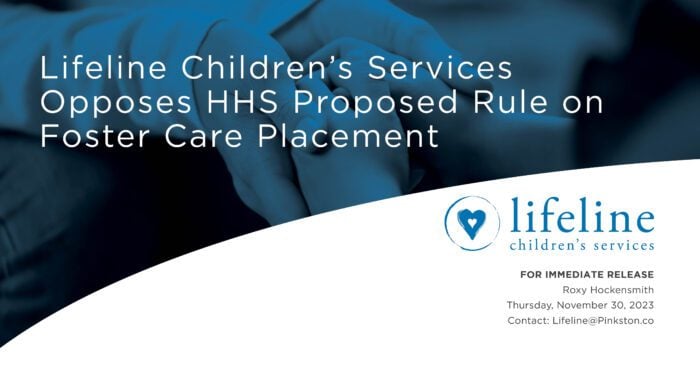Stealing can be a sensitive subject for many of us, especially when there is a strong emphasis on the value of working hard in our culture. When something that belongs to us is stolen, it evokes a strong response. Sometimes this is an emotional response or even a physical response. This makes stealing something that is difficult to understand, and when children are stealing, it is even more difficult. When children do things that go against our personal values, it can be hard to not take it personally or feel they are “bad;” however, with behaviors like stealing, it is important to note that when we bring children from hard places into our homes it may take time for them to learn to appreciate and share our values.
WHY A CHILD MAY STEAL: Because children are holistic beings, we have to consider the child’s story, culture, and abuse history. Before determining why your child may be stealing remember what the child has experienced, the developmental delays the child may have, and what the child has been taught before coming to your home. It is very important to know that your child may or may not even understand the concept or behavior that is stealing.
Child’s History: Children may have had to steal in order to survive. Children may have witnessed their birth families or others close to them stealing. They may have even participated in the stealing. In order to survive, a child may have stolen food or items while in the orphanage. Typically, our children’s behavior is driven by meeting their own needs, and until the needs of safety and security are met, they may still resort to this survival behavior. We cannot expect a child to move into our world and immediately take on our values. It will take time for them to learn and understand this new value and expectation of their behavior.
Lack of Ownership: Children internationally adopted or children who are in foster care often experience a lack of ownership. For children who have been adopted internationally, orphanages often have a community mentality, where everything is shared- no one owns property of their own. Children in foster care who may have experienced many transitions often lose, or are not allowed to take personal items with them in the transition, this drives a need to have something to claim as their own.
Trauma: Trauma impacts the brain in many ways. Stealing may be born out of a place of fear. This fear can cause a child’s brain to be triggered into survival mode. Their brain is telling them “you’re not safe, get what you need to be safe.”
Anxiety or Lack of Impulse Control: Sometimes stealing can be an external response to an internal issue. Children who are dysregulated can steal because it soothes their internal anxiety for a brief moment. In some cases, stealing can be an external answer to an internal problem. For children who struggle with self-regulation, stealing something insignificant can be a response to stress. This stress reaction can feel good and make them feel calm for a moment. For example, if your child is stealing things when he moves from his main classroom at school to another activity this may mean that transitions have caused stress and taking something soothes that anxiety for a moment. Often times these items can be as insignificant as taking a pencil or a hair clip from another student’s desk.
WHAT MAY BE STOLEN: Some examples of things that might be stolen are food, clothing, money, jewelry, technology, items in the home, things from friends at school or church, things from stores, and even presents. As mentioned earlier, at times the items taken can be seemingly insignificant in value.
HOW TO RESPOND TO STEALING: Before you respond to your child’s behavior, first evaluate what might be driving your child’s need to steal. Remember, a child may not have self-awareness or insight about their behavior, and it is your role as parent to provide that insight. Once you have gained insight, then connect with your child on an emotional level before the correction and training begins. Here are some recommendations in how to respond to your child:
Connect: First connect. Physically drop down to your child’s level. Make sure you use a soft tone of voice, monitor your facial expressions, and if possible try to get eye contact with your child. Eye contact may not be possible initially because your child may be feeling shame. Remember, this is a chance for you to model unconditional love, empathy, forgiveness, remorse, and conflict resolution for your child. This is an opportunity to align yourself with your child and teach them important life lessons and values.
Level the reaction at the behavior not the child: Using words like “thief” or “bad child” when correcting this behavior may cause your child to believe that is who they truly are. We want to empower our children to understand that they are precious, but the behavior may not be accepted. Don’t overreact. Keep in mind there is no need to jump to “Def Con 5” if your child steals something. It is important that the reaction and consequences match the level of behavior.
Keep it simple: Keep your responses calm, clear, and under control. When children are in survival mode, (the fight, flight, and freeze responses), they cannot absorb what you are saying in that moment until they have returned to a state of calm. Once your child is calm, you can address the problem and teach your child why stealing is not acceptable. It is better to use simple explanations and few words in the teaching moment. A long lecture can be overwhelm-ing for a child and can send them back into survival mode. This is counterproductive.
Low Self Esteem: It is normal for children to want to fit in and not stand out. Children, and even adults, can equate their personal value to the value and worth of their possessions. It is normal childhood behavior for children to want to feel that something is their own. It is important to pursue your child’s heart and communicate with them about their feelings of self-esteem.
Developmental Stage: It is a normal phase of childhood development that between the ages of 4 and 5 children may experiment with some level of stealing. This is the time when children learn the value of things, ownership, and property. It is important to remember that typically your child’s chronological age will not align with their developmental age (due to their histories and traumas). It is also important to remember if your child has a developmental diagnosis or special need. Some of our children may have developmental delays, cognitive delays, and more. For example, a child may be 8 years old, but developmentally 4 years old; therefore, we may see our 8 year old experimenting with stealing. Your child may also be in the developmental stage of concrete and literal thinking. If so, the child may see you purchasing an item from the store but not understand the concept of the exchange of monies for goods. So, to them it looks like you are taking something from a store, and they could copy this behavior of seemingly taking without paying. As parents of children who may be developmentally younger than their chronological age, we need to allow our chil-dren time to learn and “catch up” to their peers.
Make observation statements: When you see a pair of shoes that does not belong to your child, make a direct ob-servation statement like, “I see these shoes that do not belong to us” or “those shoes are not ours.” Often times, it feels natural to ask your child where the shoes came from, but this can lead your child into lying because he or she may be afraid of getting in trouble.
Make a plan: Decide in advance what fair consequences for this behavior will be. This will permit you to respond calmly and clearly when it does occur. It will also prevent you from engaging in an emotional response or power strug-gle with your child. Share with your child the expectations of behavior, rules, and consequences in advance so that they are prepared for this as well. Hopefully, being proactive with a plan will prevent the child entering into survival mode when you do need to respond to their behavior.
Be Proactive: Try to identify the triggers that may lead your child to steal. You can do this by observing and journaling about what happened during the day before the stealing incident. This may help you to note a pattern in your child’s behavior. Then you can remove or address those triggers in advance, or at least be prepared for how your child may react. Remove things that are dangerous, sentimental, or very valuable out of sight until you feel that trust has been rebuilt and your child is ready to manage their behavior. Be sure to give your child opportunities to learn the values and concepts of earning and paying for items and personal possession. Give your child the opportunity to re-build trust with you if they have stolen something. If stealing is a response to feelings of anxiety for your child, then help your child to develop coping skills that will reduce anxiety so that stealing is not necessary. There are many calming techniques, brain games, activities, and exercises you can practice with your child “outside of the moment” to help them be prepared when faced with rising levels of anxiety and the temptation to steal.
Don’t take it personally: Children are often in survival mode when they steal. This means the action is not an attack on you. Instead, this may be a survival skill. While it may impact you and your family, it is important to align yourself with your child and help them understand their actions. Track your progress with your child. By journaling, you can see progress and celebrate that with your child. It can also remind you that your child does not always steal. Remind yourself that this is a marathon, not a sprint. While the child’s stealing is not your fault, you get the opportunity to help your child grow and thrive over time.
Seek help: As you help your child, remember it is always good to seek advice or wisdom from others. Share your feelings or thoughts with others you trust in your support system (like close friends, fellow adoptive families, and more). If you do not see the behavior begin to decrease in frequency, then it may be time to seek assistance from a counselor. And remember, the Lifeline team is here to encourage you and guide you.
CONCLUSION:
It is important to understand why a child may steal and to be prepared with effective ways to address the underlying needs behind this behavior, as well as the behavior itself. By staying calm and utilizing effective connecting and correcting strategies, it will help guide your child into understanding that they are safe, their needs are met, and that they can express their thoughts and feelings in a healthier way.
Developed by: Beth Perez, LMSW
References: Beyond Consequences, Logic, and Control: A Love Based Approach to Helping Children with Severe Behaviors. Boulder, CO: Beyond Consequences Institute.; Forbes, H.T. (2009). Sonia Martin, MSW, LGSW, (2017, April 26), Children’s aid Society, Retrieved from APAC online training https:/training-childrensaid.org/module-1/lying-cheating-end-stealing-in-foster-and-adopted-children/



